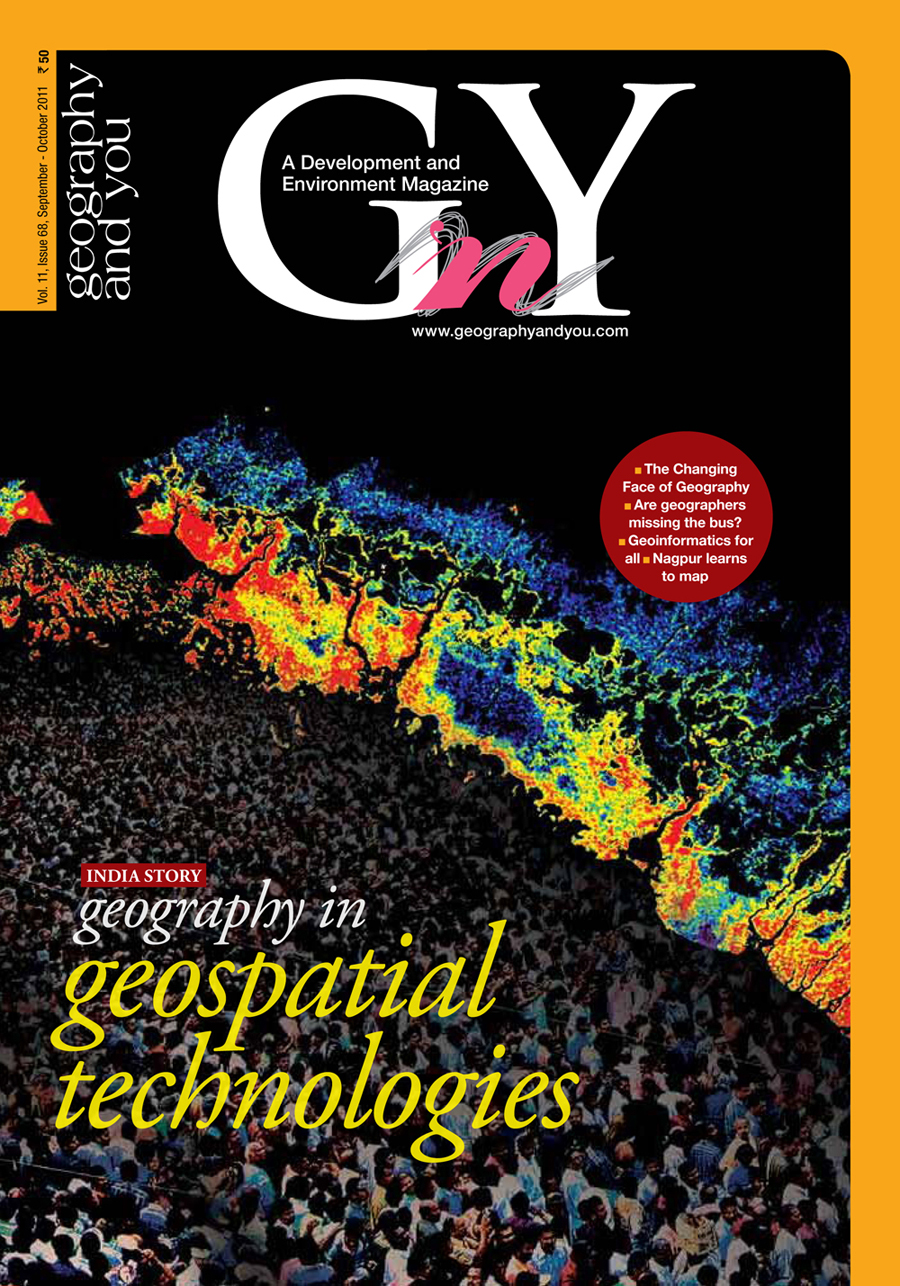
Inside this issue
Geography in GIS
Today the study of geography is changing significantly and beneficially and, in particular, expanding outside academic confines. This is enabling the domain to meet the demand for the use of geographic science to address myriad issues facing the world.
In a world which is increasingly becoming spatially aware geography and geographic information system (GIS) need realignment to enable geographers to fit in.
A three day National Level Data Users’ Seminar and GIS Training for 55 senior secondary school and junior college teachers from the Vidharba region of India held in Nagpur, from 16 to 18 of October 2011, turned into a memorable event for all.
Geographic information system and its applications are fast becoming a part of daily living. Here are some excepts of how exactly GIS is slowly edging toward world domination.
The boundaries between surveying, mapping, geographic information system (GIS), remote sensing and global navigation satellite systems (GNSS) are blurring making it easier to integrate them under the umbrella of geomatics.
Power and GIS
The Ministry of Power, Government of India, launched the Restructured Accelerated Power Development and Reforms Programme (R-APDRP) in July 2008. Geographic information system (GIS) is an integral part of its implementation, intrinsically indicating that geospatial technologies are slated to soon become a way of life.
India is steadily venturing into renewable energy resources like wind and solar. With such unpredictable energy sources feeding the grid, it is necessary to have a grid that is highly adaptive in terms of supply and demand. A good electric supply is one of the key infrastructure requirements to support overall development, hence, the opportunities for building smart grids in India are immense.
Environment Today
A statistical assessment of the state of India’s forests after the implementation of Forest Conservation Act, 1980 is attempted in the paper. The increasing green cover and decreasing trend in diversion of forest area after 2001 seem to be positive signs.
The lifeline of the UNESCO heritage site was choked off when the Panchana Dam was built on the Gambhir River. Now there is a move to reserve a share of water from the very same Dam for the Park and rejuvenate the millions that depend on it for their lives and livelihood.
India's Outdoors
Located in the picturesque Kangra Valley, Palampur is a tourists’ delight. Within reach from the town by short drives and walks are numerous fascinating destinations which become even more mystical in the rains.
The dark raw forms of the metal artifacts and figurines of Chhattisgarh, appear as a reflection of its own people. Both share a coarseness that is underlined by quiet elegance and dignity.
In brief
Dear readers, The opportunity that geospatial information provides can make a real difference in our everyday lives. Yes, geographic information system (GIS) is just a tool, but once the value and potential of such information is realised, the results will be astounding. India needs to urgently cap

